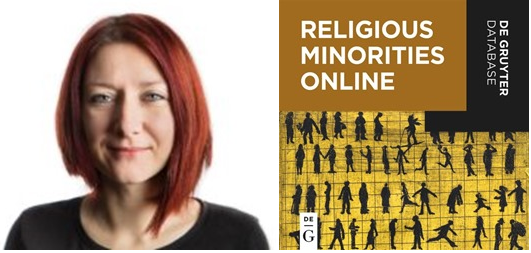Paulina Niechciał has authored a paper titled ” Zoroastrian Minorities “. This was published in the Religious Minorities Online, edited by Erica Baffelli, Alexander van der Haven and Michael Stausberg. Berlin, Boston: De Gruyter, 2024. .
Zoroastrian Minorities
Paulina Niechciał
Article Link: https://doi.org/10.1515/rmo.23014866
Abstract
The article examines Zoroastrian minority communities in three different contexts of their functioning, namely in Iran, home to the oldest Zoroastrian community, in India, which hosts the largest Zoroastrian population, and in the diaspora, where Zoroastrian settlements have emerged as a result of relatively new migrations. It discusses how Zoroastrian minority communities developed and transformed in specific contexts, adapting to changing conditions, coping with their minority status, modifying their beliefs, and adopting varying identity strategies resulting from their different relationships with dominant groups. The article also draws attention to the challenges to the integrity of traditionally understood Zoroastrian communities posed by new contexts, globalization, transnational activities, and such practices as mixed marriages and the conversion of outsiders to Zoroastrianism.
Introduction
Zoroastrianism is often considered to be the oldest revealed religion in the world and to have influenced other traditions, such as Judaism, Christianity, and Islam. It is also known by the name Zarathushtrianism or the Zarathushtri religion, referring to the name of Zoroaster, a figure considered a prophet by Zoroastrians, in the form derived from the ancient Iranian languages, and by the name Mazdaism or the Mazdayasnian religion (Pers. mazdayasna), indicating the worshiping of the God Ahura Mazda. A follower is a Zoroastrian or Zartoshti / Zarthosti / Zarthushti, depending on the region, or behdin, a follower of the “good religion”, which can also denote a lay community member as opposed to a priest and is derived from the term used for the religion of Zoroaster in the oldest religious texts (Y.44.10[1], cf. Russell 1989).
Wherever Zoroastrians live in the modern world, they are a minority, although they escape the dichotomous division into “old minorities”, to denote national or autochthonous communities that permanently reside in a given territory, and “new minorities”, to refer to groups formed relatively recently as a result of migration (Boulter et al. 2020, 2). Iran is home to the oldest Zoroastrian minority community, but India has for centuries hosted the largest population of Zoroastrians, known as Parsis, who settled there to escape Islamization. Parsis have long been integrated into state structures and made India their home, although they have never forgotten their Iranian roots, which place them between national and diasporic minorities. “New” Zoroastrian minority communities have been formed through more recent migrations, beginning with the settlements that Parsis established in the Far East, East Africa, and Great Britain between the late 18th and the beginning of the 20th century, and continuing with the 20th-century migration, primarily to North America. Thus, studying Zoroastrianism requires a more flexible approach to the minority category, as spanned on a continuum, to understand the complexity of its population (cf. Poirier 2020).
Demographic surveys have shown a global decline in the Zoroastrian population. Between 2004 and 2012, it decreased by 11% and in 2012 included 111,201 members (Rivetna 2012, 4). According to the 2011 Indian census, Parsis in India, based mainly in Mumbai, numbered 57,264. Given its aging demographic profile, trends towards late marriage or non-marriage, low fertility rate, and migration abroad, it has decreased since then (Raju and Singh 2017); the decline also affected the scattered settlements of the earlier Parsi diaspora. In Iran, 15,000 Zoroastrians were recorded in 2012 (Rivetna 2012, 3), and that number has also declined since then due to demographic trends and emigration. Zoroastrians live mainly in Tehran, where a more recent estimate put their population at 7,000 (Hashemi, Amiri, and Sabet 2023).
Contrary to the decline of traditional settlements, growth has been observed in North America. In the United States alone, in 2012, the Zoroastrian population was 14,306 and presumably later outnumbered the one in Iran. The largest communities live in California, New York, Texas, and the Washington, DC area, and Parsis outnumber Iranians everywhere except California (Rivetna 2012). In 2021, Canada hosted about 7,000 Zoroastrians[2], mainly in Ontario and British Columbia. Regarding Europe, the main destination for Zoroastrian migrants, predominantly Parsis, has been Great Britain, where 4,000 people declared Zoroastrianism as their religion in the 2021 census[3]. Yet another country with a relatively large minority of Zoroastrians is Australia, where statistics compiled in 2012 showed nearly 2,600 people in this community (Rivetna 2012, 3).
Presenting the demographics of Zoroastrian minority communities becomes more complicated when people born into other religious traditions but who have chosen to embrace Zoroastrianism are included. This phenomenon lacks accurate data, and Zoroastrians themselves have not developed a common attitude towards it, a matter I will address in the last part of the article. First, however, I will outline how Zoroastrian minority communities developed and transformed in specific contexts, coping with their status, adapting to changing conditions, and adopting certain identity strategies.

